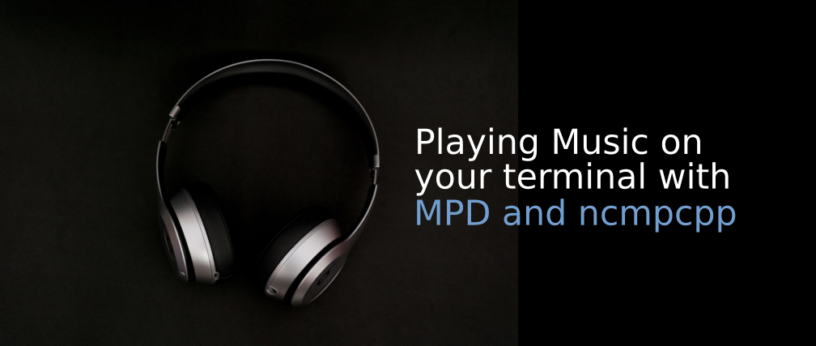4.5 KiB
Playing Music on your Fedora Terminal with MPD and ncmpcpp
MPD, as the name implies, is a Music Playing Daemon. It can play music but, being a daemon, any piece of software can interface with it and play sounds, including some CLI clients.
One of them is called ncmpcpp, which is an improvement over the pre-existing ncmpc tool. The name change doesn’t have much to do with the language they’re written in: they’re both C++, but ncmpcpp is called that because it’s the NCurses Music Playing Client Plus Plus.
Installing MPD and ncmpcpp
The ncmpmpcc client can be installed from the official Fedora repositories with DNF directly with
$ sudo dnf install ncmpcpp
On the other hand, MPD has to be installed from the RPMFusion free repositories, which you can enable, as per the official installation instructions, by running
$ sudo dnf install https://download1.rpmfusion.org/free/fedora/rpmfusion-free-release-$(rpm -E %fedora).noarch.rpm
and then you can install MPD by running
$ sudo dnf install mpd
Configuring and Starting MPD
The most painless way to set up MPD is to run it as a regular user. The default is to run it as the dedicated mpd user, but that causes all sorts of issues with permissions.
Before we can run it, we need to create a local config file that will allow it to run as a regular user.
To do that, create a subdirectory called mpd in ~/.config:
$ mkdir ~/.config/mpd
copy the default config file into this directory:
$ cp /etc/mpd.conf ~/.config/mpd
and then edit it with a text editor like vim, nano or gedit:
$ nano ~/.config/mpd/mpd.conf
I recommend you read through all of it to check if there’s anything you need to do, but for most setups you can delete everything and just leave the following:
db_file "~/.config/mpd/mpd.db"
log_file "syslog"
At this point you should be able to just run
$ mpd
with no errors, which will start the MPD daemon in the background.
Using ncmpcpp
Simply run
$ ncmpcpp
and you’ll see a ncurses-powered graphical user interface in your terminal.
Press 4 and you should see your local music library, be able to change the selection using the arrow keys and press Enter to play a song.
Doing this multiple times will create a playlist, which allows you to move to the next track using the > button (not the right arrow, the > closing angle bracket character) and go back to the previous track with <. The + and – buttons increase and decrease volume. The Q button quits ncmpcpp but it doesn’t stop the music. You can play and pause with P.
You can see the current playlist by pressing the 1 button (this is the default view). From this view you can press i to look at the information (tags) about the current song. You can change the tags of the currently playing (or paused) song by pressing 6.
Pressing the \ button will add (or remove) an informative panel at the top of the view. In the top left, you should see something that looks like this:
[------]
Pressing the r, z, y, R, x buttons will respectively toggle the repeat, random, single, consume and crossfade playback modes and will replace one of the – characters in that little indicator to the initial of the selected mode.
Pressing the F1 button will display some help text, which contains a list of keybindings, so there’s no need to write a complete list here. So now go on, be geeky, and play all your music from your terminal!
via: https://fedoramagazine.org/playing-music-on-your-fedora-terminal-with-mpd-and-ncmpcpp/
作者:Carmine Zaccagnino 选题:lujun9972 译者:译者ID 校对:校对者ID
